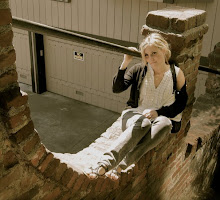
Compared to the wiles of previous travel days, our journey to Würzburg am Main (Würzburg on the Main River) was uneventful. We arrived and had a short walk from the train station to our hotel (although it might as well have been a hostel, as the accommodations—in large part due to the weird seafood scent percolating from the restaurant below—were definitely sub par. No urging was needed to encourage us to leave as Jason and I left quickly left to explore the city. The first place of interest was Würzburg’s infamous Residenz. This colossal palace structure (referred to by Herr Rick Steves as the “Versailles of Germany”) was commissioned by two prince-bishops between 1720 and 1744. Inside, Baroque gilding wrapped the marble pillars and archways in gold and the world’s largest fresco by the renowned Italian artist Giovanni Tiepolo graced the ceiling vault of the main staircase. After wandering the halls and appreciating the artistic mastery of each room, we proceeded outside into the misty fog where we found the beautiful garden practically empty—simply waiting for its ivy arboretum, grand stone staircases, and tree-line walkways to be captured by the precision of Jason’s camera.
We left the Residenz and proceeded to a unique pair of steeples in the distance. Along the way, we passed a World War Memorial Site (seriously by chance—I think it is just that I am a walking WWII magnet), which displayed six stone crosses with the years 1939 through 1945 listed on each one. In the center was a sculpture depicting six massive German soldiers carrying the coffin of a fallen Bruder. Needless to say, I was quite excited by the find.
Without a map (I know—huge improvement since the days of Europe Semester), we ambled around town, capturing the Dom St. Killian, the Neumunster-Kirche, and the Markt Square by camera memory and of course our own.
After a delicious dinner, we came across the Rathaus (or City Hall), and what began as a simple picture taking exercise turned into a Zweiteweltkrieg (World War II) history lesson as we discovered a small well-lit room and entered inquisitively. A three-dimensional model of the city’s destruction of 1945 lay before us. From the graphic picture-covered walls, we learned that the bombing raid on Würzburg which occurred on March 16th 1945, only lasted 20 or so minutes yet destroyed 80 percent of the town. Based on the pictures and the information provided (or at least what we could ascertain from German), the restorative effort that went into the post-war skeleton so that it would resemble its pre-war grandeur was phenomenal. Another hour of night exploring brought us back to our hotel and to our beds.
Jason and I woke from our slumber, to a misty morning in Würzburg, but ready to tackle the morning (after a latte macchiato and a croissant, of course ☺). We had to take on the grand Festung Marienberg which sits on loftily on the hill above the river Main surrounded by medieval stone walls and vineyards (I know, a stark contrast, right?). Ok, brief history lesson: in 707AD, a church was first built on this site, and the construction of the fortress commenced in 1201. It served as the residence of the prince-bishops until 1719, and today it remains a famous landmark and houses museum. After a slightly steep climb, we were greeted by the medieval fortress, its garden walking paths, and an impressive view of the city sleeping below. Walking back over the Alte Mainsbrücke—and old bridge with large stone statures erected in each nook—I was quaintly reminded of Prague and the journey still to come.
Das ist alles für heute!

No comments:
Post a Comment